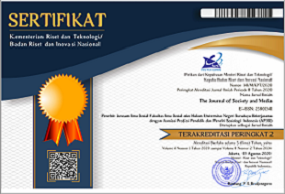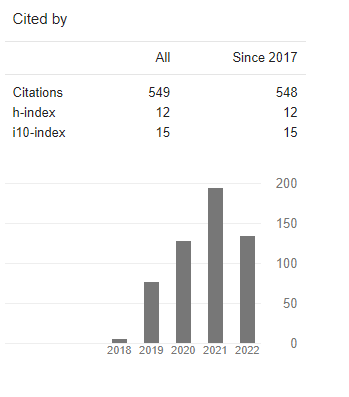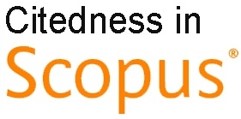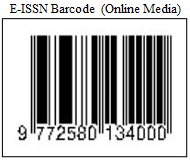Social Media and Identity Formation: Content Analysis of Movie “Eighth Grade”
DOI:
https://doi.org/10.26740/jsm.v5n2.p385-408Keywords:
identity development, social media, content analysis, eight grade, deindividuationAbstract
Movie is regarded as a visual medium that offers a comprehensive presentation of a phenomenon in a defined time. This study employed a qualitative method to provide an interpretive paradigm on the movie titled “Eighth Grade” (directed by Bo Burnham, 2018). It aims to understand the massive role of the use of social media in shaping the identity of young people. The content analysis of movie “Eighth Grade” was carried out by considering abstraction, explication, and structuring. To understand this phenomenon, this study employed Luyckx's perspective on identity formation theory and the social identity model of deindividuation effect. The results of the research showed that the movie "Eighth Grade" vividly described the process of identity formation in a sequential and comprehensive manner, as well as showcased the occurrence of deindividuation processes in social media activities. It Is suggested that to construct a healthy identity, digital activities should complement offline activities, not replace them.
References
Barna. 2020. The Connected Generation. California: Barna Group.
Burnham, B. 2018. Eighth Grade. USA: A24 Film.
Erikson, Erik. 1994. Identity, Youth and Crisis. New York: W. W. Norton & Company.
Hootsuite. 2020. Digital Indonesia 2020. Jakarta.
Mayring, Philipp. 2014. Qualitative Content Analysis: Theoretical Foundation, Basic Procedures and Software Solution. Klagenfurt: Gesis.
Ryan, M., and E. Deci. 2017. Self-Determination Theory. New York: The Guilford Press.
Wang, C. (2016). Fictional portrayals of young people in Chinese and American juvenile delinquency films: A comparative study. Media Watch, 7 (1), doi: 92-104. 10.15655/mw/2016/v7i1/86494
Downloads
Published
How to Cite
Issue
Section
License
Copyright (c) 2021 The Journal of Society and Media

This work is licensed under a Creative Commons Attribution 4.0 International License.
 Abstract views: 3225
,
Abstract views: 3225
, PDF Downloads: 2507
PDF Downloads: 2507












